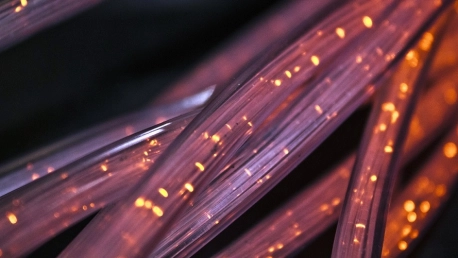Have you ever thought about the mechanisms that enable your digital content to trek the longest of distances across the globe? Or considered the infrastructure that allows the uninterrupted streaming of digital media from servers located continents away? The answer to these marvels of modern communication lies in the depths of the sea—on the ocean floor. But these undersea cables aren’t just your average cords – they provide connectivity on a global scale and carry billions of gigabytes of data across the world daily. That said, let’s dive into the deep blue sea and look at how these cables have changed and improved to become the backbone of telecom.
The Anatomy of Submarine Cables
Diving into the construction of undersea cables reveals a marvel of modern engineering, designed to withstand some of the planet’s most challenging environments. At their core, these cables are technological lifelines, ensuring the seamless flow of data across continents.
Components and Structure
At first glance, a submarine cable might appear simple, but its construction is anything but. Inside, you’ll find one or more optical fibers, the heart of the cable, where data travels as light. These fibers are incredibly thin, almost as thin as a human hair, but they’re capable of transmitting terabytes of data per second.
Surrounding the optical fibers are layers of protective materials. A plastic buffer tube houses the fibers, protecting them from moisture and physical stress. This tube is wrapped in steel wires to provide strength and durability, ensuring the cable can withstand the ocean’s immense pressures and the weight of being buried in the seabed. This is then encased in a protective jacket made from materials like polyethylene that keeps it dry and also protects against damage and corrosive seawater.
Materials and Technology
The choice of materials in an undersea cable’s construction is critical. The optical fibers are made from silica glass and are chosen because it’s clear and can transmit light over long distances with minimal loss. However, there needs to be a sweet spot between durability and flexibility because the cables must be able to withstand being laid over mountains and valleys along the ocean floor.
Laying Submarine Cables
If you think that laying down undersea cables involves throwing them overboard and hoping for the best, think again. This is a process that takes a lot of careful planning, along with specialized ships and very high-tech equipment.
How it’s Done
Laying submarine cable begins long before the cable ever touches the water, with careful evaluation and surveying of the proposed route. This initial phase is important for avoiding natural hazards like underwater volcanoes, earthquakes, and deep-sea trenches, as well as human-made obstacles like shipwrecks and other cables.
Once the route is mapped, the laying of the cable can start. Specialized cable-laying ships with massive spools of cable then take to the sea. The cable is carefully unspooled and laid on the ocean floor, guided by sophisticated GPS systems to ensure it follows the predetermined path. If the water is too shallow, the cables might be buried to protect them.
Challenges During Installation
The installation of undersea cables is not without its challenges. The ocean can be an unforgiving place, and it can cause serious risks for a process that’s as delicate as laying fiber-optic cables:
- Natural Hazards: The sea bed is home to a variety of geological features that can threaten the integrity of the cable. Earthquakes, for example, can shift the ocean floor, while underwater landslides and currents can expose or bury the cable. This can cause the cables to get damaged.
- Human-Induced Hazards: Fishing activities, anchor drops from ships, and even intentional sabotage pose significant risks to undersea cables. Ensuring the cables’ safety requires continuous monitoring and sometimes re-routing or repairing sections that become damaged.
Every single thing relating to these cables is planned down to the smallest detail to ensure that we can enjoy global connectivity without interruption because of their reliability and state-of-the-art materials.
Mapping the Global Network
Picture a map of the world, but instead of countries and cities, it’s criss-crossed with lines representing undersea cables. These lines connect London to New York and even remote locations you wouldn’t expect, such as islands in the middle of the Pacific. It’s a global ecosystem of data, ensuring that an email from Tokyo can reach Toronto in the blink of an eye.
But it’s not just about connecting the big players. These cables also reach out to more isolated areas, bringing the digital world to distant shores and bridging the digital divide. It’s a bit like making sure every house on the block, not just the ones in the middle, gets a piece of the broadband pie.
Measures Taken to Protect and Maintain These Infrastructures
First off, a lot of planning goes into laying these cables. Experts scout out the safest paths along the ocean floor to avoid any known dangers. And they don’t just lay them and forget about them – there’s constant monitoring to catch any issues early on.
In the more risky areas, like shallow waters or near busy ports, the cables get extra protection. They might be wrapped in tougher materials or even buried deeper under the seabed to keep them safe.
And it’s not just one company or country looking out for these cables—it’s an international effort. Everyone involved shares information and helps, making sure these cables stay intact. There are also rules and agreements in place to protect this vital part of our global internet.
Final Thoughts
Who would’ve thought way back when that in a few short decades, we’d have fiber-optic cables spanning the Atlantic and beyond to provide us with crystal-clear connectivity? Sure, it’s something we may take for granted every day, but if you really stop to think about the massive feat of engineering that went into making this possible, it’s pretty mind-blowing that we could pull it off in the first place.
Granted, these cables could get damaged at any time by natural disasters or other contributing factors. However, they have stood the test of time and disruptions for more than a few years with minimal interruptions, which once again stands as a testament to the brilliant minds that are behind this massive step for telecommunications.
So next time you’re sending company documents to the other side of the world without a hitch, spare a thought for those incredible undersea cables and the efforts to safeguard them. It’s a testament to human ingenuity and cooperation, making sure we stay connected, no matter where we are.









